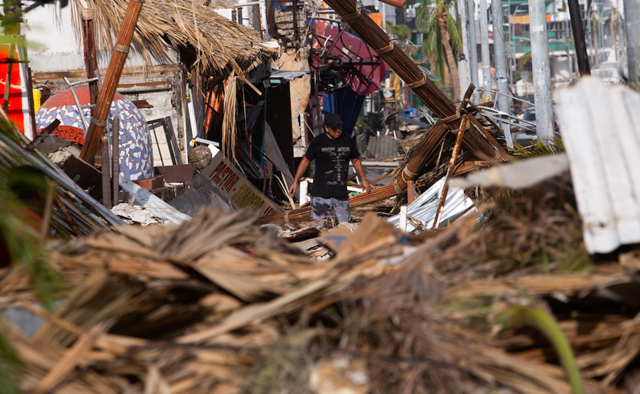
ACAPULCO, Mexico, Oct 28, 2023 (BSS/AFP) - Acapulco was struggling Saturday to recover from an extraordinarily powerful hurricane which claimed 39 lives and provoked widespread power, water and telephone outages.
As aid finally began to arrive after Hurricane Otis' devastating landfall Wednesday, the government upped the latest death toll from the previous report of 27.
The current toll includes 29 men and 10 women, Secretary of Security Rosa Icela Rodriguez said in a video on social media. The government has not identified any of the dead.
Rodriguez said at least 10 people remain missing, up from four previously reported.
A security force of some 10,000 has been deployed across the area after reports that supermarkets had been looted, the authorities said.
Additionally, the Mexican army and navy have established an air bridge "to accelerate the distribution of humanitarian aid," a government statement said.
Thousands of liters of water and food supplies have been distributed in the famed resort city, home to 790,000 people.
The government said victims in need of specialized care were being flown to hospitals elsewhere in Mexico.
Despite the government efforts, many survivors around the area were still struggling to make contact with family and friends elsewhere in Mexico. Otis did enormous damage to phone lines and telecommunications towers.
Andrea Fernandez, who is eight months pregnant, said she was distraught -- unable to let her husband in another state know that she is fine.
"There is no (cellular) service. I haven't been able to communicate for three days," she said, jostling on a bridge with about 20 others keen to make a call or text to loved ones.
"I'm desperate," she said through tears.
This picturesque tourist haunt, which once lured Hollywood stars like Elizabeth Taylor and Elvis Presley, had never experienced a Category 5 hurricane like Otis which, in a single day, made local landmarks built over decades look like they had been bombed out.
Cell phones intermittently pick up signals in some parts of the port, but the situation is hit or miss.
One local woman could be overheard telling her loved ones: "There is no way to get out of here! I'll talk to you again when I can. Everything here is gone. It's horrible."
Some disgruntled survivors have told local media they were angry to hear tourists were taken to safe places to ride out the storm -- in sharp contrast to the population as a whole.
Francisco Perez, 50, is desperate to get word to his mother. He has accused the authorities of a grossly inadequate response.
"(They put) some portable (phone) antennas at a couple of places, but... what are we supposed to do?" he asked angrily, as people's focus has begun turning to the lack of reliable water and food.
At one point, some tourists keen to contact kin approached journalists on the port's main avenue, Costera Miguel Aleman, asking them to pass on details of a sick person who needed to be evacuated from a damaged building.
Otis strengthened with dramatic speed, growing in just hours from a tropical storm to the most powerful category of the five-step Saffir-Simpson scale before hitting land early Wednesday.
The World Meteorological Organization described the hurricane as "one of the most rapidly intensifying tropical cyclones on record," exceeded in modern times only by another Pacific hurricane, Patricia, in 2015.
The speed with which Otis intensified took the government and weather forecasters by surprise, leaving little time to issue warnings and prepare residents for its arrival.